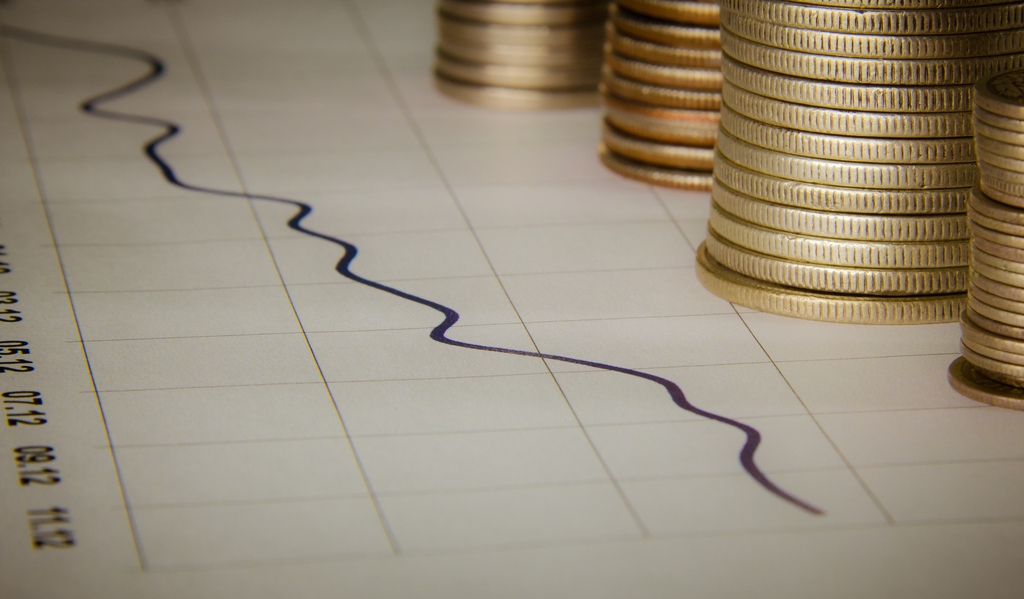PIMCO: Signposts – Negative is the New Normal
PIMCO: Signposts – Negative is the New Normal

By Joachim Fels, PIMCO Global Economic Advisor
It is no longer absurd to think that the nominal yield on U.S. Treasury bonds could go negative. Last week the German 30-year government bond yield dipped into negative territory for the first time ever. Around $14 trillion of outstanding bonds worldwide, or 25% of the market, now trade at negative yields. What has long been viewed as a short-term aberration – that creditors are paying debtors for taking their money – has already become the new normal in developed markets outside of the U.S. When the world economy next goes into hibernation, U.S. Treasuries – the ultimate safe haven apart from gold -- are unlikely to be an exception. And if the trade war keeps escalating, we may get there faster than you think.
What’s behind negative interest rates? Most observers blame central banks like the ECB and the Bank of Japan (BoJ) that are taxing banks’ excess reserves with negative deposit rates and have made bonds scarcer by removing them from the market through their purchase programs. The BoJ now owns about half and the ECB about 30% of the bonds issued by their respective governments.
However, central banks are not the villains but rather the victims of deeper fundamental drivers behind low and negative interest rates. The two most important secular drivers are demographics and technology. Rising life expectancy increases desired saving while new technologies are capital-saving and are becoming cheaper and thus reduce ex ante demand for investment. The resulting savings glut pushes the “natural” rate of interest lower and lower.
Against this backdrop, the financial history of the last decade is littered with central banks that either kept the “money” rate of interest above the “natural” rate or tried to raise it too early (the ECB in 2011) or too far (the Fed in 2018). Both were punished by market forces and have had to reverse course.
One likely factor behind the savings glut and negative interest rates is negative “time preference”. Once upon a time, economists believed that people always value today’s consumption more than tomorrow’s consumption – and thus display positive “time preference”. People would therefore always demand compensation in the form of a positive interest rate in order to forego current consumption and save for the future. People were viewed as impatient and the more impatient people are, the higher the interest rate has to be to make them save.
This made sense in a world where people usually died before they retired and struggled to satisfy basic needs. However, it can be argued that in affluent societies where people can expect to live ever longer and thus spend a significant amount of the lifetime in retirement, more and more people have negative time preference, meaning they value future consumption during their retirement more than today’s consumption. To transfer purchasing power to the future via saving today, they are thus are willing to accept a negative interest rate and bring it about through their saving behavior. [For more on this, see No End to the Savings Glut, September 2015, one of the first pieces I wrote after joining PIMCO four years ago.]
Next to the global secular drivers depressing interest rates, the cyclical forces pulling U.S. rates lower have recently intensified.
First, Friday’s July labor market report and the accompanying revisions to the prior months showed that the recession in the global and U.S. manufacturing sector has started to spill over into the U.S. labor market. As PIMCO’s U.S. economist Tiffany Wilding notes, six-month average net monthly payroll gains have now slowed to 140,000 from 225,000 last year and, more importantly, aggregate hours worked for production and non-supervisory workers are now contracting on a six-month annualized basis, something that usually doesn’t happen outside of recession. With the labor market cooling off, households are likely to increase precautionary saving in the period ahead, thus adding to the demographically-induced saving glut.
Second, President Trump’s surprise announcement to introduce a 10% tariff on the remaining $300 billion or so of imports from China effective September 1st raises uncertainty and is likely to induce companies to postpone or slash investment spending (and hiring) further, thus reducing the demand for investible funds.
Third, with the natural rate of interest likely falling fast due to all of these developments, the Fed risks lagging behind, thus tightening the monetary policy stance (measured by actual rates minus the natural rate) rather than easing it. Already last Wednesday, the equity and bond markets’ reaction to the 25 basis points reduction in the Fed funds target range suggested that the Fed is viewed as being behind the curve and probably slowed down by a split committee. And this was before President Trump’s tariff announcement, which – if implemented on September 1 – ups the ante for the next FOMC meeting where another 25 basis points cut may again be viewed by the market as too little too late.
Taken together, recent developments have increased the odds that a “mid-cycle adjustment” of the Fed funds rate similar to the mid- and late-1990s (when the Fed cut rates three times) will not suffice, but that last Wednesday marked the beginning of the next major easing cycle. To be sure, so far this is a possibility rather than a probability. But if and when the Fed cuts rates all the way back down to zero and restarts QE, negative yields on U.S. Treasuries would likely become the new normal. Take advantage of positive U.S. yields as long as they last!
